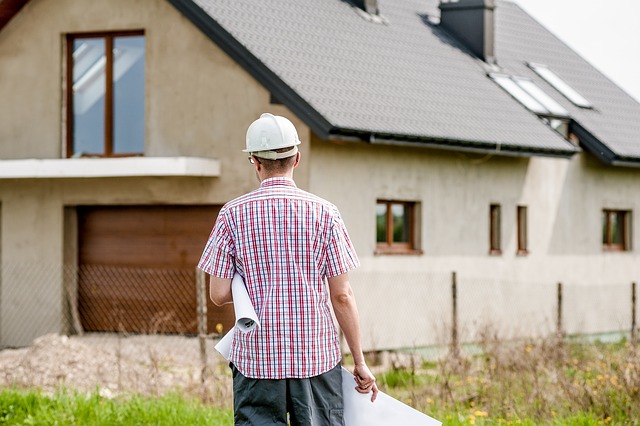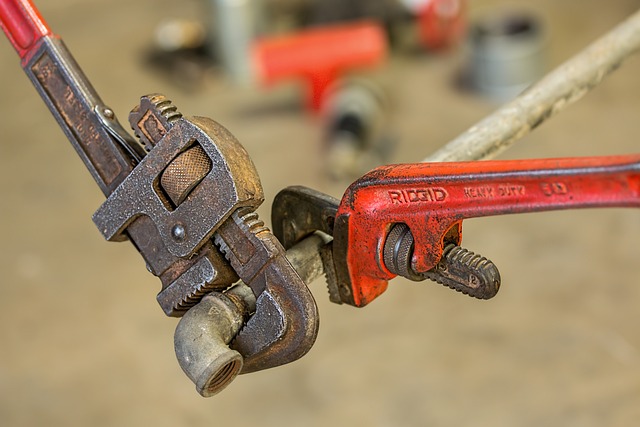When considering window replacements as part of home repair and maintenance, it's vital to evaluate factors like energy efficiency, insulation performance, aesthetic alignment, and low-maintenance features. Signs of wear such as drafts or condensation between panes indicate the need for modern, energy-efficient windows that can reduce utility costs through better insulation. The latest window technology offers multi-pane glasses, durable frames like vinyl or fiberglass, and UV-protective coatings to enhance both charm and curb appeal while maintaining architectural integrity. Proper installation is non-negotiable, requiring precise measurements, careful removal of old windows, repairs to any damaged areas, and adherence to industry standards for optimal performance. After installation, consistent cleaning, ideally biannually, and regular checks of seals and frames are necessary to maintain energy efficiency and visual appeal. Early detection and addressing of issues through biannual inspections and lubrication prevent wear and extend the life of your windows. By maintaining your new windows, you're ensuring long-term comfort, energy savings, and preserving the value of your home repair investments as part of responsible property stewardship.
Upgrading your home’s windows can significantly enhance energy efficiency, curb appeal, and comfort. This article delves into the critical aspects of window replacement and installation within the scope of home repair and maintenance. We’ll explore the factors driving the decision to replace windows, outline the steps for a smooth installation process, and provide guidance on post-installation care to maintain your new windows’ integrity over time, ensuring your investment in home upkeep remains sound and beneficial.
- Assessing the Need for Window Replacement: Factors Influencing Decisions in Home Repair and Maintenance
- The Process of Window Installation: Steps to Ensure Efficiency and Effectiveness in Home Repair and Maintenance
- Post-Installation Care and Long-Term Maintenance: Sustaining Your Investment in Home Repair and Maintenance
Assessing the Need for Window Replacement: Factors Influencing Decisions in Home Repair and Maintenance

When considering window replacement as part of home repair and maintenance, property owners must evaluate several critical factors to ensure their decision aligns with both functional needs and long-term benefits. The condition of existing windows is paramount; signs of wear such as drafts, condensation between panes, or difficulty in operation may indicate it’s time for an upgrade. Energy efficiency is another significant concern, as modern windows can reduce heating and cooling costs significantly by minimizing heat transfer. Aging windows often fail to meet contemporary standards for insulation, leading to potential savings on utility bills with a replacement. Additionally, advancements in window technology offer a variety of options, including double or triple-pane glass, improved frame materials like vinyl or fiberglass, and enhanced coatings that protect against UV rays. Homeowners should also consider the aesthetic appeal of new windows, as they can greatly impact the visual charm and curb appeal of their home. The choice of window style, color, and design should complement the architectural features and the neighborhood’s character. In terms of maintenance, low-maintenance materials and easy-to-clean designs are valuable considerations for busy households seeking durability and convenience. Ultimately, the decision to replace windows is a multifaceted one that involves evaluating energy efficiency, aesthetics, functionality, and longevity, all of which contribute to home repair and maintenance strategies.
The Process of Window Installation: Steps to Ensure Efficiency and Effectiveness in Home Repair and Maintenance

When undertaking window replacement, efficiency and effectiveness are paramount to ensure a seamless home repair experience. The process begins with careful measurement of the existing window openings to select the perfect fit for the new windows. This step is crucial for maintaining the structural integrity and energy efficiency of your home. Once the appropriate window sizes are determined, the next phase involves removing the old windows. Professional installers typically start by extracting the sash, followed by the removal of any failing sealants or putty that hold the glass panes in place. After the old windows are removed, any necessary repairs to the window frame or surrounding area are carried out to prevent moisture intrusion and ensure a proper seal for the new windows.
Proper installation begins with setting the head track, sill, and jambs into the opening, aligning them with precision. It is essential that these components are level, plumb, and square for optimal functionality and appearance. The installers then apply a continuous bead of sealant along the perimeter of the new window to provide weatherproofing and enhance the window’s durability. Following this, the glass units are carefully set into place, ensuring they are securely locked into position. Finally, trim work is completed to finish the installation. Throughout the process, best practices dictate that installers should regularly check their work against industry standards to guarantee energy efficiency and longevity. Post-installation, a thorough inspection is conducted to confirm that the windows operate smoothly and that there are no air leaks or water infiltration points. This diligent approach to window installation contributes significantly to home repair and maintenance, enhancing both the aesthetic appeal and practical functionality of your residence for years to come.
Post-Installation Care and Long-Term Maintenance: Sustaining Your Investment in Home Repair and Maintenance

After investing in new window replacements and installation, safeguarding this improvement through diligent post-installation care is paramount for maintaining your home’s efficiency and aesthetic appeal. Regular cleaning, both inside and out, not only preserves the clarity of your view but also ensures optimal light transmission and ventilation, which are essential for energy conservation. It’s advisable to clean windows at least twice a year, more often in areas with high pollution or salt air.
Long-term maintenance involves more than just cleaning. Inspecting the seals, frames, and operation mechanisms on a biannual basis can help detect any potential issues before they escalate. Lubricating moving parts will keep windows functioning smoothly and prevent wear and tear. Additionally, checking for condensation between panes in double or triple-glazed units is crucial, as this can indicate seal failure, leading to reduced insulation properties. By adhering to these maintenance practices, you extend the lifespan of your windows and uphold the value of your home repair investment, ensuring that your living environment remains comfortable, energy-efficient, and secure for years to come.
homeowners contemplating window replacement should carefully weigh the factors influencing such decisions, as outlined in “Assessing the Need for Window Replacement: Factors Influencing Decisions in Home Repair and Maintenance.” The meticulous steps detailed in “The Process of Window Installation: Steps to Ensure Efficiency and Effectiveness in Home Repair and Maintenance” ensure a seamless transition from old to new. Notably, the attention given to post-installation care, as discussed in “Post-Installation Care and Long-Term Maintenance: Sustaining Your Investment in Home Repair and Maintenance,” is paramount for maintaining the integrity of the windows and the home’s energy efficiency. By understanding and implementing these key aspects, homeowners can confidently enhance their living spaces with lasting improvements through responsible window replacement and installation practices.
